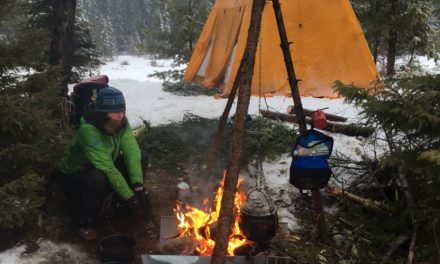Protect Natural Areas for Future Generations
By Kim Latimer, Photos by Connie Hartviksen
The Thunder Bay Field Naturalists is one of the longest standing conservation clubs in the region. Their goal is clear: to protect natural areas for future generations. In some cases that means purchasing land in order to conserve it.
The club has acquired 18 properties since 1993, covering over 2000 hectares (5000 acres), and represent a vibrant and growing Nature Reserve initiative. Their properties are located from Pine Bay southwest of the city to Michipicoten Island, in the northeast corner of Lake Superior. The nature reserve property on Michipicoten is the latest acquisition, which they purchased when the First Nation reached out in an effort to protect the dwindling caribou population. The club also has three new properties closing in April.

“There is a general understanding of conservation as the ‘protection of plants and animals, natural areas,’ but it’s also about wise use that gives future generations the same opportunity to explore and enjoy nature that we have,” says Bruce Thacker, president of the Thunder Bay Field Naturalists. “We promote the interest in and the study of nature generally, and of all aspects of the environment,” he adds. “We encourage people to appreciate and enjoy the wonders of nature and create opportunities for them to do so.”
William Bog, in the area north of the Parkdale subdivision in Thunder Bay, is one of the 18 key properties the club has a vested interest in. The Field Naturalists have been actively acquiring properties in William Bog for decades, “even before the expressway went through”, says Susan Bryan, the group’s Nature Reserves Chair. The Field Naturalists are now the largest landholders of William Bog, which has since been declared a provincial wetland.
“The area is habitat for unique plants and animals not found elsewhere in the city,” says Thacker.

“It’s a wildlife mecca; a valuable wetland that holds water in the soil and has great interest for naturalists,” Bryan explains. “In late 1990s, when the Naturalists started to acquire land there, there were hundreds of tiny parcels. Many of those parcels of land have come forward to the club as donations and we’ve been able to buy some over the years.”
Education is the other half of the Naturalists’ conservation strategy. The club hosts walks, hikes, talks, and works to engage youth as part of its sustainable conservation efforts. Thacker explains that their priorities include “helping youth develop an appreciation of nature and strong environmental ethic, engaging with the First Nations on all aspects of conservation, and commenting on proposed government policies and actions when they are deemed to be harmful to our natural environment.”
He says with 230 members, the club is small but mighty. “It is an ambitious agenda for a relatively small organization, but we have some tremendously talented and dedicated members that put in a lot of time and effort.”
For more information about the Thunder Bay Field Naturalists or to join their activities visit tbfn.net or follow them on Facebook.














